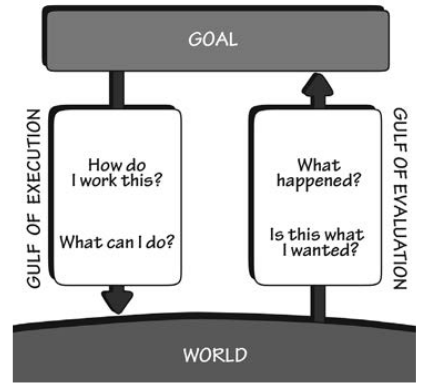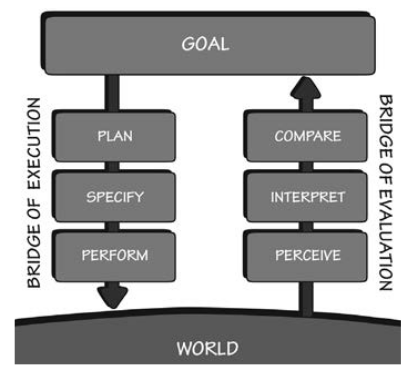中国版的The Design Of Everyday Things
经常时不时地回去逛王垠的博客,接触它并不是因为他特立独行,他从清华退学,主要是 在通过他,认识了scheme的简单和强大,当然这不是本文的主题。
当然也是因为他在其博文介绍了The Design of Everyday Things.这本书的确对我很有启发,这是一本让你以人为本的设计书,程序员也需要经常阅读。

知识分为外在知识(Knowledge in the world)和内在知识(Knowledge in the head).
我们每天可能带着目的(goal)|问题(problem),受到world的影响(1.signifier:信号 比如灯光、颜色 2.Constraints物理约束,文化约束等 3.Natural Mapping 正常的自然现象), 来观察我们在干什么,得到什么,亦或者从中得到我们想要的从而获得开心、幸福。
这是这本书给我的感觉。当然进一步地你可以继续去阅读他。
粗略感觉

- Goal
- Plan 7. Perceive
- Specify 6. Interpret
- Perform 5. Perceive

Stage 2-4 is called execute stage (Feedforward process)
Stage 5-7 is called evaluation stage (Feedback process)

2 and 7 is called Reflective Brain Conscious Control Processing
3 and 6 is called Behavioral Brain Conscious Control Processing
4 and 5 is called Visceral without Brain Processing(Muscles and your sense)
而今天看到了中国式感觉的解释如何做事情.
- 认清楚这件事情;
- 分析与这件事情有关的一切的一切;
- 制定做好这件事情的计划;
- 实施计划;
- 验证这件事情的结果;
我们可以简化为:
- 认定你的事情
- 做它
- 检验